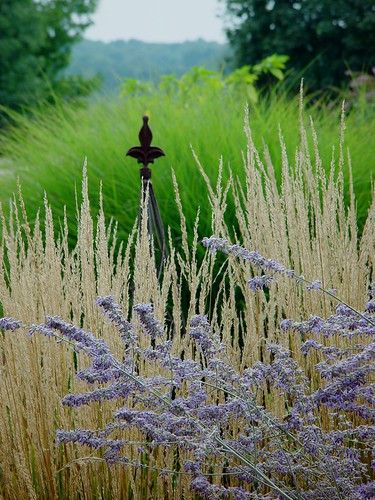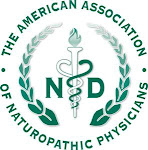
Photo by one2c9ood via Flickr, used under the Creative Commons License.
I have long felt a connection between the earth and naturopathic medicine, so it wasn’t much of a stretch for me to want to investigate how permaculture principles might influence its practice. I took a year-long course recently at the Regenerative Design Institute (RDI) in Bolinas, California, one of the premier permaculture centers in the U.S. This missive includes my thoughts on how the fields of permaculture and naturopathic medicine work similarly.
Global warming shows us that we have a detachment from what we do/put onto and into the earth. We have a similar detachment from our bodies and our healthcare. Many times, people relinquish their power in their own health to their primary care providers. They hand over their wellness whole cloth to a medical profession that is largely untrained in looking at nourishment of the body, as well as in finding the underlying causes of illness, as naturopathic doctors are.
Most of the world’s problems can be solved in a garden. In the garden, we work with water, waste and nourishment – many of the same things with which our patients struggle. Permaculture is a design science rooted in the observation of natural systems. The goal is to design human settlements that have the stability and resiliency of a natural ecosystem. Similarly, two main principles of naturopathic medicine “first, do no harm,” and “find and treat underlying cause of illness or disease” work to produce sustainable health for the people it touches.
Reductionist science sees each component separately. Permaculture recognizes the interconnectedness of humans and nature and all of the aspects that nourish and harm both. Naturopathic physicians recognize the interconnectedness of all of the body’s systems, bringing to light the principle to “treat the whole person.”
One thing that becomes apparent immediately upon arrival at the Regenerative Design Institute is the incredible diversity of bird species. This diversity is indicative of the ability of the ecosystem there to handle stressors. In naturopathic medicine, we welcome diversity in the profession. It serves to make us all stronger, and increases our ability to morph, support and deal with change – to deal with stress on the system (the entire profession of naturopathic medicine). In order to support this diversity, you may give up one thing in order to have another, but what you get in return will outweigh this sacrifice.
The first principle of permaculture is observation. It is through careful observation that we can truly see what the ecosystem needs. It is similar in human health. It is important for me to spend a lot of time with my patients, to get a very good idea of all of the aspects of their health. If someone comes in with migraines, it is important to focus not only on the head, but also to assess digestion, hormones, hydration, nourishment, absorption, etc. In the garden, you can’t jump in with plow and pesticides until you see how it is all working together. Each part of the system affects the other. How can we create balance? First you must observe the whole being in order to become familiar with all of the players in the illness.
I recently purchased a new worm bin (my new favorite topic if anyone has questions or comments!!) and decided to put it closer to the house so that we could put our food scraps in the bin more quickly and easily. My husband was worried about it getting too much sun exposure (bad for a worm bin). I was happy to report to him that I had been watching what happened with the sun on our back deck for the past year. I had also been watching the moonlight, as the full moon will reflect the sun path six months hence. So our worm bin will be safe in the corner by our hedge, but I could only come to this by careful observation over a long period of time.
People with illnesses often come to us wanting a quick fix. That can happen occasionally, but the observation of that human system takes time. Similarly, real and true healing (and guidance in that healing) takes time.
Another permaculture principle that I love for its relationship to naturopathic medicine is stacking functions. The goal is to get at least three functions out of any one project. In the case of my worm bin, we are reducing the amount of waste that goes to the landfill, decreasing the number of trash pick-ups we need, and producing some of the finest compost money can buy. All from our food scraps.
In naturopathic medicine, I am always working to stack functions, even before I was aware that it had a groovy name. Women who seek my care for hormonal issues, and who happen to have digestive issues also, will benefit from a good source of fiber. The fiber prevents re-absorption of the hormones in the GI tract and gently corrects digestive function.
Every time we utilize another piece of permaculture in our lives, we are healed, too. We connect to as much life force as possible. Work in the garden is so appealing because it is so close to the life force. Helping our patients into the garden will connect them to it as well.
James Stark at RDI speaks about the homeopathic intervention – something that gently and slightly makes a motion that creates a profound effect as it ripples outward. Moving in harmony with natural systems, you can create more food, more water, more beauty, and more health. The homeopathy that I use on my patients helps them heal gently from the inside out, yet quite profoundly once the appropriate intervention is chosen.
Lastly, a word of caution on getting rid of weeds. Different types of weeds are clear indicators of what your soil is lacking. Similarly, in our relations with colleagues, patients, friends and even adversaries, the “weeds” can show us what we need to do to improve our own “soil.” So welcome the weeds to help you see what is missing in your own ecosystem.
The healing of ourselves and the healing of the earth are the same journey.




No comments:
Post a Comment